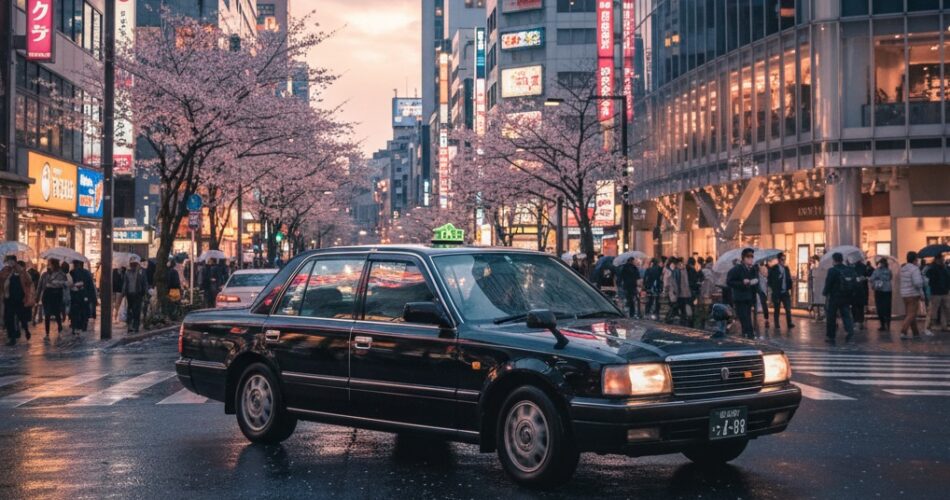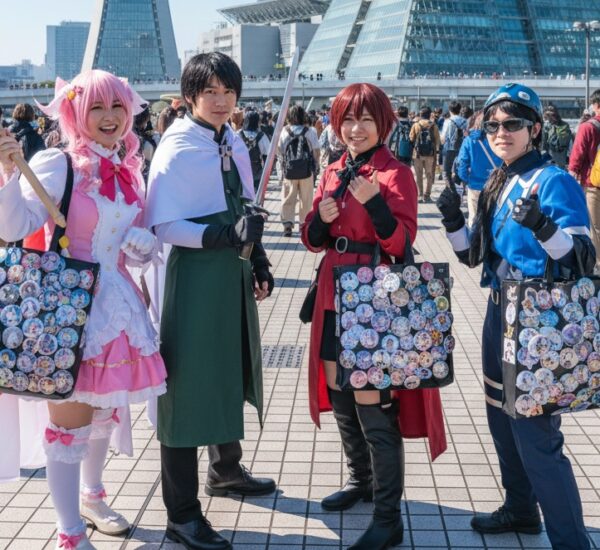Taxis in Japan are a symbol of exceptional service—they are impeccably clean, the drivers are professional and courteous, and the rear passenger door opens and closes for you automatically. While they can be more expensive than public transport, they offer unparalleled convenience for traveling with luggage, reaching specific addresses, or getting around late at night after the trains have stopped. For a tourist, navigating a taxi ride can be one of the most direct and personal interactions you have.
This comprehensive guide provides all the essential Japanese you’ll need to confidently take a taxi (タクシー, takushī) anywhere in Japan. We will cover everything from how to hail a cab and give your destination, to navigating during the ride and handling payment at the end.
Chapter 1: Hailing and Finding a Taxi
Finding a taxi in a Japanese city is usually easy. You can hail one from the street by raising your hand, or you can find a designated taxi stand (タクシー乗り場, takushī noriba) outside train stations and major department stores. Look for a sign in the front windscreen to see if the taxi is available. Remember, the driver controls the rear passenger door, so wait for it to open for you and don’t try to close it yourself when you leave!
— Windshield Signs (Displayed in Red/Green Lights) —
空車 (くうしゃ) – Kūsha
This sign, usually in red, means **Available**. This is the taxi you can hail.
賃走 (ちんそう) – Chinsō
This sign, usually in green, means **Occupied** or In Service. This taxi already has a passenger.
迎車 (げいしゃ) – Geisha
This means **On Pickup**. The taxi has been dispatched and is on its way to pick someone up.
— Key Vocabulary for Finding a Taxi —
タクシー乗り場 (たくしーのりば) – Takushī noriba (Taxi stand)
空車 (くうしゃ) – Kūsha (Available/Empty car)
自動ドア (じどうどあ) – Jidō doa (Automatic door)
Chapter 2: Giving Your Destination
This is the most critical part of the journey. Since the Japanese address system can be complex even for locals, and many drivers may not speak English, the single best strategy is to have your destination address written in Japanese. A hotel business card, a screenshot of a Google Maps location, or a note from your hotel concierge is perfect. Present it to the driver as you get in.
— Telling the Driver Where to Go —
この住所までお願いします。
このじゅうしょまでおねがいします。
Kono jūsho made onegai shimasu.
To this address, please. (Used while showing the written address)
この (kono) = This
住所 (jūsho) = Address
まで (made) = To / Until
お願いします (onegai shimasu) = Please
東京駅までお願いします。
とうきょうえきまでおねがいします。
Tōkyō-eki made onegai shimasu.
To Tokyo Station, please. (Used for a famous landmark)
東京駅 (Tōkyō-eki) = Tokyo Station
— Essential Vocabulary for Destinations —
目的地 (もくてきち) – Mokutekichi (Destination)
住所 (じゅうしょ) – Jūsho (Address)
地図 (ちず) – Chizu (Map)
ホテル – Hoteru (Hotel)
駅 (えき) – Eki (Station)
空港 (くうこう) – Kūkō (Airport)
Chapter 3: During the Ride – Basic Directions
Most taxi drivers use a GPS navigation system (ナビ, nabi), so you usually won’t need to give directions. However, sometimes you may need to guide them to a specific entrance or a spot that’s hard for the GPS to pinpoint. Knowing a few simple directional phrases can be very helpful. When you get close to your destination, it’s also polite to tell the driver where a good place to stop would be.
— Giving Simple Directions —
次の角を右に曲がってください。
つぎのかどをみぎにまがってください。
Tsugi no kado o migi ni magatte kudasai.
Please turn right at the next corner.
次 (tsugi) = Next
の (no) = ‘s
角 (kado) = Corner
を (o) = Object marker
右に (migi ni) = To the right
曲がってください (magatte kudasai) = Please turn
ここで止めてください。
ここでとめてください。
Koko de tomete kudasai.
Please stop here.
ここで (koko de) = Here
止めてください (tomete kudasai) = Please stop
— Essential Directional Vocabulary —
まっすぐ – Massugu (Straight ahead)
右 (みぎ) – Migi (Right)
左 (ひだり) – Hidari (Left)
角 (かど) – Kado (Corner)
信号 (しんごう) – Shingō (Traffic light)
高速道路 (こうそくどうろ) – Kōsoku-dōro (Expressway)
Chapter 4: Payment and Finishing the Ride
When you arrive, the driver will state the final fare shown on the meter. Tipping is not a custom in Japan and is not expected. Most taxis in major cities accept credit cards, but it’s always a good idea to confirm before you start the ride, especially in rural areas. If you need a receipt for business expenses, you can ask for one.
— Handling Payment —
クレジットカードは使えますか。
くれじっとかーどはつかえますか。
Kurejitto kādo wa tsukaemasu ka?
Can I use a credit card?
クレジットカード (kurejitto kādo) = Credit card
は (wa) = Topic marker
使えますか (tsukaemasu ka) = Can I use it?
領収書をお願いします。
りょうしゅうしょをおねがいします。
Ryōshūsho o onegai shimasu.
A receipt, please.
領収書 (ryōshūsho) = Receipt
を (o) = Object marker
お願いします (onegai shimasu) = Please
— Essential Payment Vocabulary —
料金 (りょうきん) – Ryōkin (The fare)
現金 (げんきん) – Genkin (Cash)
お釣り (おつり) – O-tsuri (Change from payment)
領収書 (りょうしゅうしょ) – Ryōshūsho (Receipt)
Read More:



